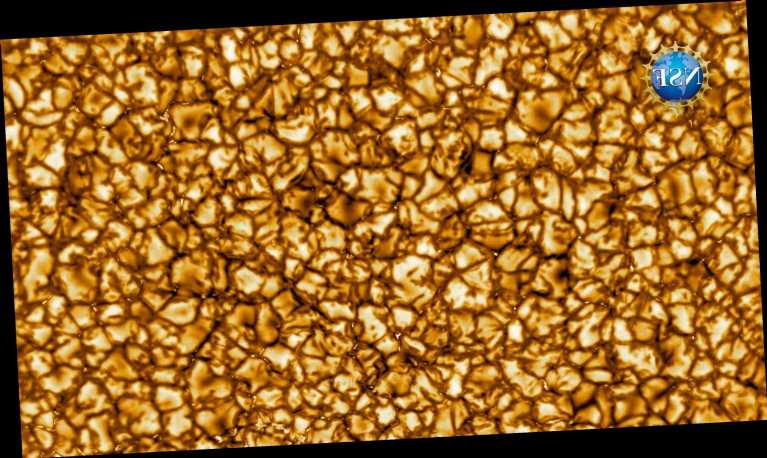A close-up image of the surface of the sun. (Photo: National Science Foundation)
Wow.
A new telescope has captured some of the most detailed, close-up images of the sun ever taken, the National Science Foundation announced Wednesday.
One of the images shows a pattern of turbulent “boiling” plasma that covers the entire sun. The cell-like structures – each about the size of Texas – are the signature of violent motions that transport heat from the inside of the sun to its surface.
According to the NSF, the Inouye Solar Telescope will “enable a new era of solar science and a leap forward in understanding the sun and its impacts on our planet.”
The telescope is located on the summit of Mount Haleakala on Maui, in Hawaii.
“It is literally the greatest leap in humanity’s ability to study the sun from the ground since Galileo’s time. It’s a big deal,” said Jeff Kuhn of the University of Hawaiʻi at Mānoa’s Institute for Astronomy
France Córdova, the director of the NSF, said that “since NSF began work on this ground-based telescope, we have eagerly awaited the first images.
“We can now share these images, which are the most detailed of our sun to date. The NSF’s Inouye Solar Telescope will be able to map the magnetic fields within the sun’s corona, where solar eruptions occur that can impact life on Earth,” she said.
This image shows a pattern of turbulent, “boiling” gas that covers the entire sun. (Photo: National Science Foundation)
The National Science Foundation said that activity on the sun, known as space weather, can affect systems on Earth. Magnetic eruptions on the sun can impact air travel, disrupt satellite communications and bring down power grids, causing long-lasting blackouts and disabling technologies such as GPS.
“This telescope will improve our understanding of what drives space weather and ultimately help forecasters better predict solar storms,” Córdova said.
Matt Mountain, president of the Association of Universities for Research in Astronomy, said that “on Earth, we can predict if it is going to rain pretty much anywhere in the world very accurately, and space weather just isn’t there yet.
“Our predictions lag behind terrestrial weather by 50 years, if not more. What we need is to grasp the underlying physics behind space weather, and this starts at the sun, which is what the Inouye Solar Telescope will study over the next decades.”
The Inouye Solar Telescope is located on the top of Mount Haleakala on Maui in Hawaii. (Photo: National Science Foundation)
Source: Read Full Article



